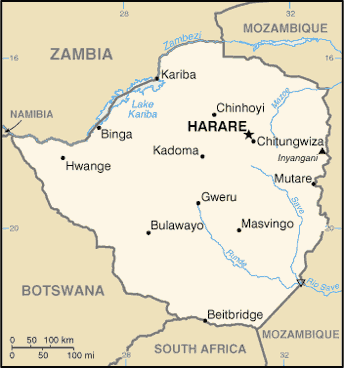Welcome to the Virtual Education Wiki ~ Open Education Wiki
Paraguay
Partners and experts in Paraguay
None.
Paraguay in a nutshell
(sourced from http://en.wikipedia.org/wiki/Paraguay)
Paraguay, officially the Republic of Paraguay (Spanish: República del Paraguay; Guaraní: Tetã Paraguái), is one of the two landlocked countries which lie entirely within the Western Hemisphere, the other being Bolivia, both in South America. It lies on both banks of the Paraguay River and is bordered by Argentina to the south and southwest, Brazil to the east and northeast, and Bolivia to the northwest.
Because of its central location in South America, the country is sometimes referred to as Corazón de América — Heart of America.
The population is 6.3 million.
The capital (and largest city) is Asunción.
The official languages are Spanish and Guaraní. About 75% of all Paraguayans speak Spanish.
Paraguay is divided by the Río Paraguay into the eastern region, officially called Eastern Paraguay (Paraguay Oriental) and known as the Paraná region; and the western region, officially called Western Paraguay (Paraguay Occidental) and also known as the Chaco.
The southeastern border is formed by the Paraná River, containing the Itaipú dam shared with Brazil. It is currently the largest hydroelectric power plant in the world, generating almost all the electricity consumed by Paraguay. Another large hydroelectric power plant on the Paraná River is Yacyretá, a collaborative project by Paraguay and Argentina.
Paraguay is a representative democratic republic, whereby the President of Paraguay is both head of state and head of government, and of a multi-party system. Executive power is exercised by the government. Legislative power is vested in both the government and the two chambers of the National Congress. The Judiciary is independent of the executive and the legislature.
Paraguay consists of seventeen departments and one capital district (distrito capital). The departments are further divided into districts (distritos).
Education in Paraguay
(sourced from http://en.wikipedia.org/wiki/Education_in_Paraguay)
Historically, Paraguay has not valued education highly. During the 1954–89 period, education initiatives took a backseat to economic concerns and the task of controlling political adversaries, and teacher salaries fell to extremely low levels. The constitution of 1992 attempted to remedy the long neglect of education: Article 85 of the constitution mandates that no government revenue be designated for educational expenditures. This measure, however, has proven to be impractical and has been largely ignored.
Nevertheless, democratization has been accompanied by a gradual improvement in the education system. Spending on education has increased, reaching 4.7 percent of gross domestic product in 2000, up from 1.7 percent in 1989. Much of the increased funding went to raise teacher salaries and update curricula. Still, Paraguayan children spend far less time in school than in most other South American countries.
Schools in Paraguay average about 700 contact hours annually, compared with 1,500 in countries such as Chile. Students are required to attend school from ages seven to 13, and surveys indicate that Paraguay has a net primary school attendance rate of 92 percent. Public education is free to all, but dropout rates remain high.
In 2003 Paraguay had an estimated literacy rate of 94 percent, with very little differential between men and women (94.9 percent to 93 percent, respectively). Illiteracy rates exceed the national average in rural areas. The 2001 census found that 15 percent of women and 10 percent of men living in rural areas were illiterate.
Schools in Paraguay
An incomplete list of secondary schools in Paraguay, with specialisms
Further and Higher education in Paraguay
Universities in Paraguay
Information on wikipedia and more generally on the web is very scanty on universities in Paraguay.
There is a list at http://www.university-directory.eu/Paraguay/Paraguay.html
Until the 1990s, the state National University and the Catholic University served Paraguay’s entire population. As part of the educational reforms of the 1990s, the government created 10 new universities, but the entire system is regarded as poor in quality.
In 2003 Paraguay’s national military academy admitted female cadets for the first time, opening another door for women pursuing education.
There are private universities as well as public universities. For example, the Universidad Columbia del Paraguay (Columbia University of Paraguay) is a private university. It was founded in 1943, but it obtained the title of university only in 1991. In 60 years it ha educated more than 200,000 students.
Polytechnics in Paraguay
Colleges in Paraguay
Education reform
Schools
Post-secondary
Wikipedia notes that "According to the United States government, Paraguay does not have an adequate university system".
Administration and finance
Schools
Post-secondary
Quality assurance, inspection and accreditation
Schools
Post-secondary
Information society
ICT in education initiatives
Virtual initiatives in schools
Virtual initiatives in post-secondary education
The Autonomous University of Asunción (Universidad Autónoma de Asunción, UAA) was funded in 1978 as a college of business management, but in 1991 attained the title of University. It is located in Paraguay and has a department of distance learning. Information is sketchy.
